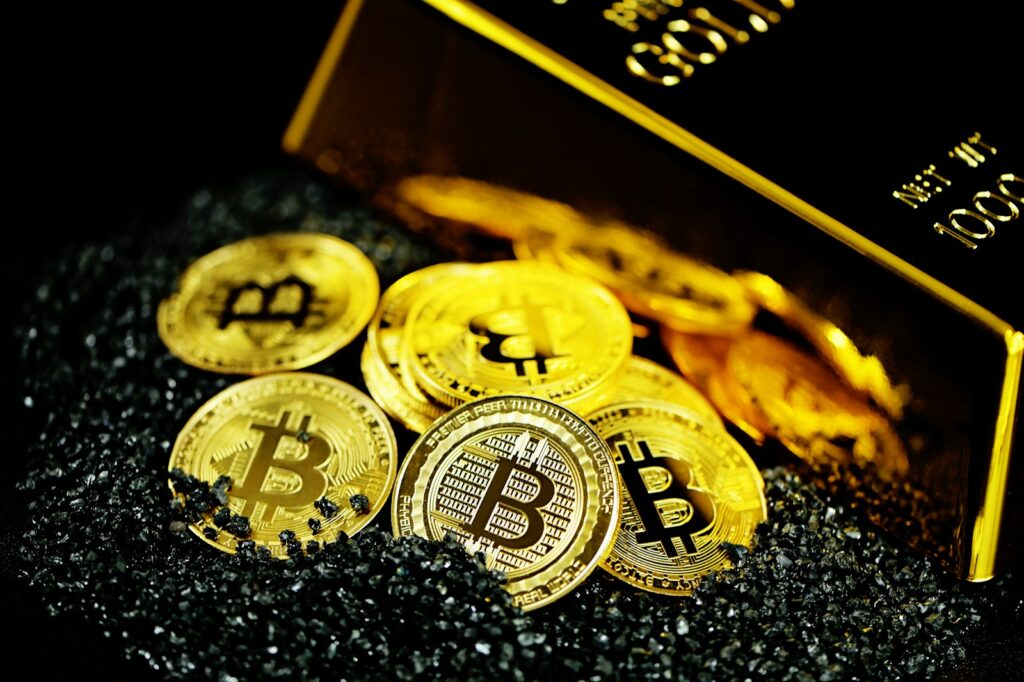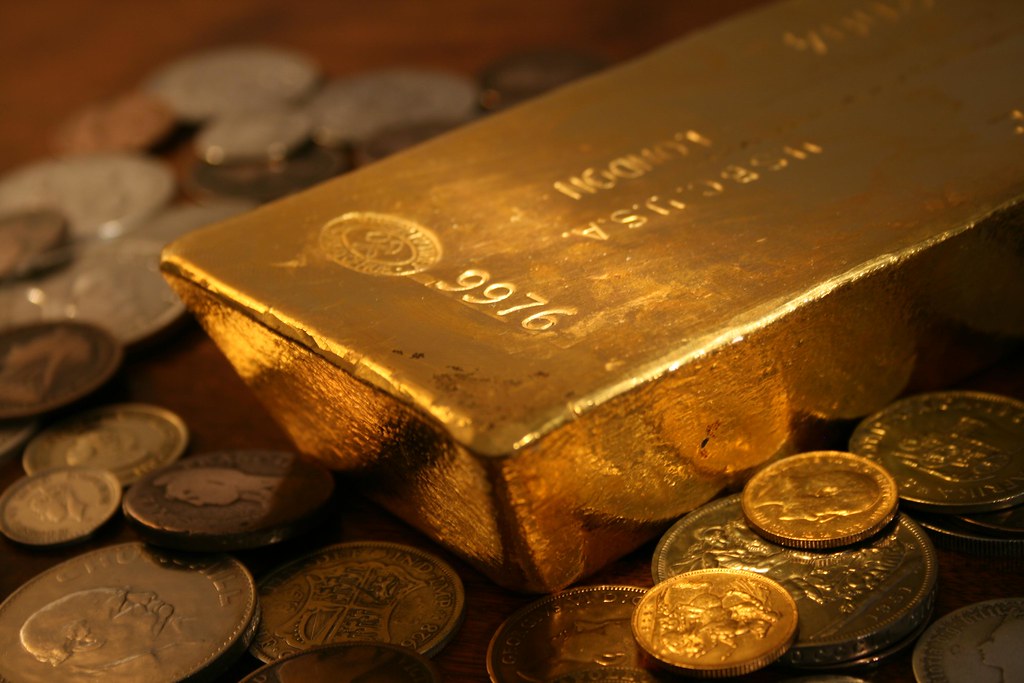Main Points:
- Global Gold Price Surge: Gold prices have reached record highs amid heightened trade war concerns and economic uncertainties.
- Outperformance of Gold-Backed Tokens: Tokens such as PAX Gold (PAXG) and Tether Gold (XAUT) have surged approximately 10%, outpacing major cryptocurrencies in the current climate.
- Increased Market Activity and Token Supply Dynamics: The rapid increase in token minting and transaction volumes reflects growing investor interest and liquidity in gold-backed digital assets.
- Traditional Markets React: Gold mining stocks and ETFs, notably the VanEck Gold Miners ETF, have also seen significant gains, reinforcing gold’s appeal as a safe haven.
- Digital Gold Debate and Bitcoin’s Position: Despite gold’s surge, Bitcoin has underperformed slightly, igniting debate over the “digital gold” narrative amid evolving market conditions.
- Future Prospects for Blockchain Applications: New developments in blockchain technology are expanding the practical uses of asset tokenization and may reshape investment strategies in both digital and traditional markets.
Global Gold Price Surge
The global economic climate has become increasingly volatile due to escalating trade war tensions, leading to significant shifts in investment behaviors. Gold, long regarded as a safe haven asset, has once again captured the spotlight. This year alone, the price of gold has surged by approximately 9.7%, reaching an unprecedented high of around $2,880 per ounce. Such a dramatic rally in gold prices is not just a reflection of investor anxiety; it is also indicative of broader economic trends. Factors including tariffs imposed by major economies, especially between the United States and China, along with economic slowdowns and political uncertainties, have contributed to this surge.
Recent reports from major financial news outlets such as Bloomberg and Reuters have highlighted that investors are increasingly seeking refuge in tangible assets like gold as traditional market instruments become unpredictable. The World Gold Council has further confirmed that heightened geopolitical tensions and shifting global demand have placed gold at the forefront of investment portfolios worldwide.
Outperformance of Gold-Backed Tokens
In the wake of gold’s impressive price rally, digital assets backed by physical gold have experienced a parallel surge. Gold-backed tokens, notably PAX Gold (PAXG) and Tether Gold (XAUT), have seen their values rise by about 10%, mirroring the movements in the physical gold market. Each of these tokens represents ownership of one troy ounce of gold held securely in vaults, providing investors with a unique bridge between the tangible stability of gold and the innovative landscape of blockchain technology.
These tokens are gaining popularity among investors who are looking for an alternative to conventional cryptocurrencies. Unlike traditional cryptocurrencies that often face high volatility and speculative trading, gold-backed tokens offer the stability associated with a historically resilient asset. As reported by CoinDesk and CryptoSlate, the rise in gold-backed tokens is a clear indicator that blockchain-based solutions are evolving to meet the needs of a new generation of investors who demand both liquidity and security.
Increased Market Activity and Token Supply Dynamics
A surge in the gold price naturally triggers increased activity in the related digital assets market. Data from blockchain analytics firm RWA.xyz has revealed that the transaction volume for gold-backed tokens has jumped by more than 53.7% compared to the previous month. This increase is not limited to trading alone; there has been a noticeable uptick in the minting of new tokens, which now occurs on a weekly basis in multi-million-dollar batches.
The heightened minting activity suggests that more investors are opting to acquire these tokens as a means of diversifying their portfolios in times of economic uncertainty. At the same time, the rate of token burn (the process of permanently removing tokens from circulation) has not kept pace with new issuances, further contributing to the overall supply available in the market. This imbalance between supply and token burning points to a sustained demand and continued market confidence in the long-term viability of gold-backed digital assets.
Traditional Markets React: Gold Mining Stocks and ETFs
As investors flock to gold and its digital counterparts, traditional markets are also experiencing significant shifts. Gold mining stocks have surged in value, a trend that is evident in the performance of related financial instruments such as the VanEck Gold Miners ETF (GDX). This ETF, which tracks a basket of gold mining companies, has appreciated by nearly 20% this year, outperforming major indices such as the S&P 500.
The simultaneous rise in both the physical and digital gold markets reinforces the notion that gold is currently one of the most attractive investment options in a turbulent economic environment. Analysts believe that the rally in gold mining stocks is driven by a renewed interest in companies that have the potential to capitalize on increased gold production, further spurred by the positive investor sentiment in gold as a safe haven asset. This trend is expected to continue as long as global economic uncertainties persist and investors continue to seek stability.
Digital Gold Debate and Bitcoin’s Position
While gold and gold-backed tokens are experiencing significant momentum, the broader cryptocurrency market tells a slightly different story. Bitcoin (BTC), often dubbed “digital gold” for its perceived store-of-value properties, has only managed a modest increase of 3.6% so far this year. Moreover, the ratio between Bitcoin’s price and gold’s per-ounce value has reached a 12-week low, suggesting that investors are temporarily favoring traditional safe havens over digital assets.
Meanwhile, Ethereum (ETH) has faced a decline of more than 17.6%, and the overall benchmark for the crypto market, the CoinDesk 20 Index, has seen a minimal gain of just 0.5%. Despite these trends, industry experts like Mike Cahill from the decentralized data network Pyth Network argue that Bitcoin’s current underperformance does not necessarily signal the failure of the “digital gold” narrative. According to Cahill, the current market dynamics—characterized by trade tensions and a stronger U.S. dollar—are temporarily favoring traditional safe haven assets such as gold.
Cahill further contends that as liquidity returns to the market and risk appetite increases, Bitcoin has the potential to regain ground rapidly. He emphasizes that savvy investors recognize Bitcoin as the second-hardest asset after gold due to its capped supply, and that policy shifts—such as those hinted at by former political figures advocating for crypto-friendly initiatives—could further catalyze Bitcoin’s resurgence. Recent commentaries on platforms like The Block and Crypto Briefing support this view, highlighting that the interplay between traditional and digital assets remains fluid and subject to rapid change based on macroeconomic conditions.

Future Prospects for Blockchain Applications and Tokenization
Beyond the immediate fluctuations in asset prices, the current market environment offers a glimpse into the future of blockchain technology and asset tokenization. The surge in gold-backed tokens is a testament to how blockchain can bridge the gap between traditional asset classes and digital finance. By offering a tangible asset—gold—on a decentralized ledger, these tokens provide a level of transparency and security that is attractive to both individual and institutional investors.
Moreover, the broader trend towards the tokenization of real-world assets is gaining momentum. Several financial institutions and technology companies are exploring ways to tokenize assets ranging from real estate to commodities. The ability to represent physical assets on a blockchain opens up new avenues for liquidity, fractional ownership, and global accessibility. For instance, platforms like Polymath and Securitize are actively developing frameworks for compliant digital securities, while initiatives such as MakerDAO’s recent experiments in collateral tokenization demonstrate the practical applications of blockchain in traditional finance.
In addition to asset tokenization, advancements in decentralized finance (DeFi) are enabling more complex financial instruments to be built on blockchain networks. This includes lending, borrowing, and yield-farming protocols that utilize tokenized assets as collateral. The confluence of these trends suggests that we are entering an era where blockchain technology is not just a speculative tool but a robust platform for real-world financial applications. As governments and regulatory bodies around the world begin to recognize the potential benefits of blockchain, further integration of digital assets with the traditional financial system seems imminent.
Recent developments in blockchain interoperability and scalability, as reported by sources such as Cointelegraph and Decrypt, have also bolstered confidence in the technology’s long-term viability. Innovations in cross-chain communication protocols and Layer 2 solutions are addressing previous limitations related to speed and transaction costs, thereby making blockchain-based systems more efficient and user-friendly. These technological improvements are essential for supporting the rapid growth in tokenization and the broader adoption of blockchain solutions across various sectors.
Future outlook
In summary, the recent surge in gold prices, driven by escalating trade war tensions and economic uncertainties, has had a profound impact on both traditional and digital asset markets. Gold-backed tokens such as PAX Gold and Tether Gold have outperformed many of their cryptocurrency counterparts by leveraging the intrinsic value of gold and the innovative capabilities of blockchain technology. Meanwhile, traditional financial instruments like gold mining ETFs have also benefited from this trend, reflecting a broader market consensus on the enduring appeal of gold as a safe haven asset.
Although Bitcoin and other major cryptocurrencies have experienced relatively modest gains, the current market dynamics do not undermine their long-term potential. Instead, they highlight the evolving nature of investment strategies in a rapidly changing global landscape. The debate over Bitcoin’s role as “digital gold” continues, with many experts suggesting that its temporary underperformance may well be a short-lived phenomenon, especially as market conditions stabilize and liquidity improves.
Furthermore, the rapid advancements in blockchain technology and the growing trend of asset tokenization point to a future where digital assets and traditional financial instruments coexist in a more integrated and efficient ecosystem. As the market matures, investors can expect to see further innovations that bridge the gap between the tangible and digital worlds, creating new opportunities for wealth creation and financial inclusion.
Ultimately, the ongoing developments in both the gold market and the cryptocurrency space underscore a broader shift in global finance. Investors are increasingly seeking solutions that combine the stability of traditional assets with the efficiency and transparency of blockchain technology. This convergence not only enhances investment strategies but also lays the groundwork for a more resilient and inclusive financial future. Whether you are searching for the next digital asset, exploring alternative revenue streams, or looking to leverage blockchain for practical applications, the current trends signal a promising horizon ahead.


